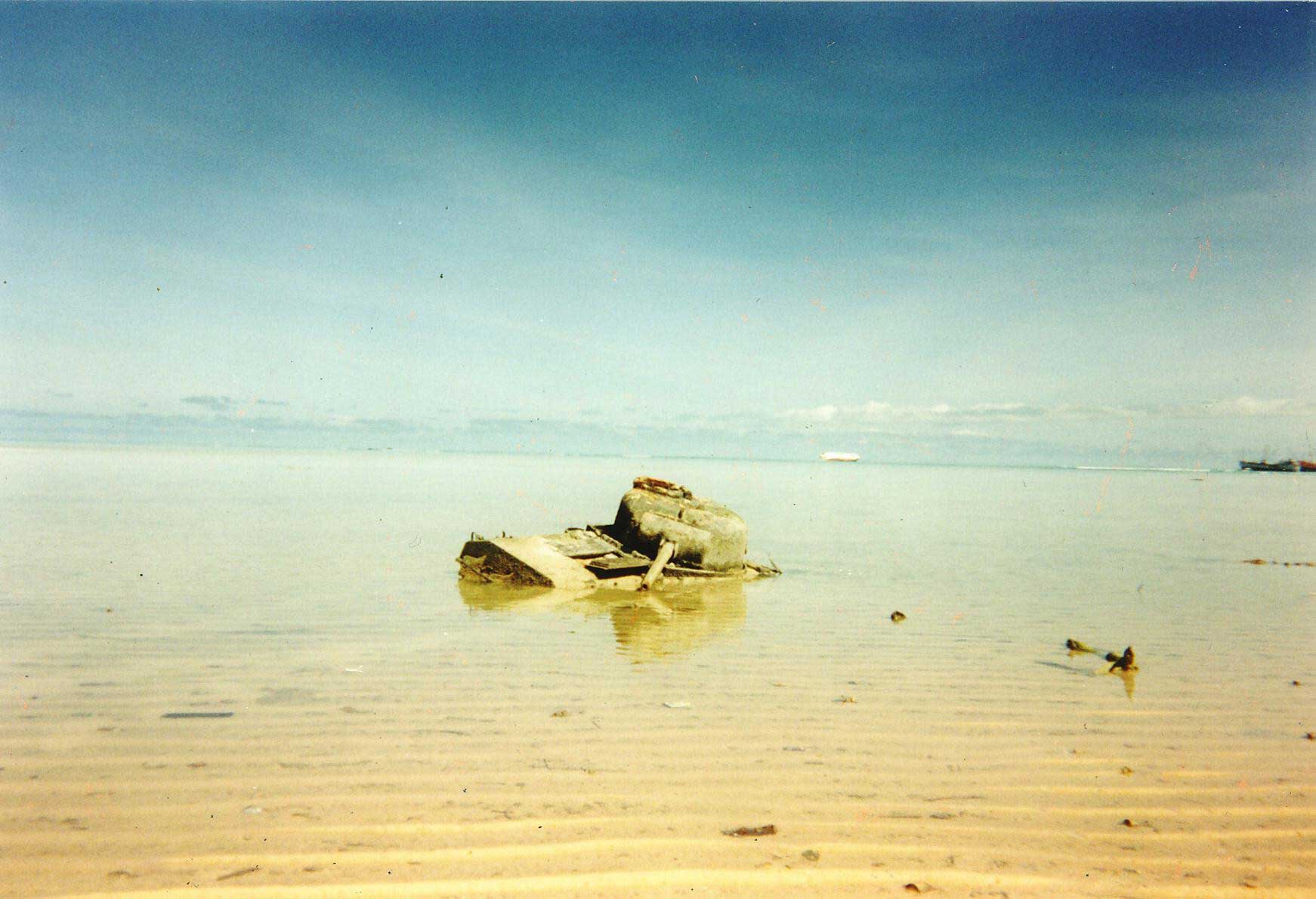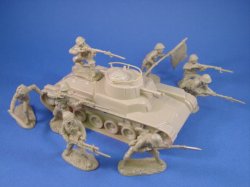 Tarawa
TarawaWWII Plastic Toy SoldiersWWII Plastic Toy Soldiers check out this brilliant bloig on ww2, the pictures here of soldiers are from it, unless stated

On November 20, 1943, Marines landed on the tiny Betio island, in the Tarawa Atoll.  Rear Admiral Keijo Shibasak boasted that a million men couldn't take the island in a thousand
Rear Admiral Keijo Shibasak boasted that a million men couldn't take the island in a thousand .jpg) years. It was taken in four days. Tarawa was heavily defended, where Marines encountered
years. It was taken in four days. Tarawa was heavily defended, where Marines encountered  heavily losses on the beaches. Over 1,000 Americans were killed, which outraged people back
heavily losses on the beaches. Over 1,000 Americans were killed, which outraged people back in the states, because it was such a high loss for a seemingly insignificant tiny island. Poor
in the states, because it was such a high loss for a seemingly insignificant tiny island. Poor  intelligence is credited to the landing craft being stuck in the water and the beach, but at least
intelligence is credited to the landing craft being stuck in the water and the beach, but at least these lessons would be learned, and refined in future amphibious landing battles. Out of about
these lessons would be learned, and refined in future amphibious landing battles. Out of about 5,000 Japanese, only 146 were alive, mostly Korean slave laborers, the Japanese organized
5,000 Japanese, only 146 were alive, mostly Korean slave laborers, the Japanese organized their Betio defenses for an all-around, decisive struggle to keep United States forces from reaching the beaches .
their Betio defenses for an all-around, decisive struggle to keep United States forces from reaching the beaches . ![[Figure 18. Betio Island]](http://www.lonesentry.com/articles/jp-betio-island/betio-island-map-tarawa.jpg) A map, drawn to scale, is designed to show an
A map, drawn to scale, is designed to show an over-all picture of the enemy defensive setup. The insets show important areas in detail.
 Rear Admiral Keijo Shibasak boasted that a million men couldn't take the island in a thousand
Rear Admiral Keijo Shibasak boasted that a million men couldn't take the island in a thousand .jpg) years. It was taken in four days. Tarawa was heavily defended, where Marines encountered
years. It was taken in four days. Tarawa was heavily defended, where Marines encountered  heavily losses on the beaches. Over 1,000 Americans were killed, which outraged people back
heavily losses on the beaches. Over 1,000 Americans were killed, which outraged people back in the states, because it was such a high loss for a seemingly insignificant tiny island. Poor
in the states, because it was such a high loss for a seemingly insignificant tiny island. Poor  intelligence is credited to the landing craft being stuck in the water and the beach, but at least
intelligence is credited to the landing craft being stuck in the water and the beach, but at least these lessons would be learned, and refined in future amphibious landing battles. Out of about
these lessons would be learned, and refined in future amphibious landing battles. Out of about 5,000 Japanese, only 146 were alive, mostly Korean slave laborers, the Japanese organized
5,000 Japanese, only 146 were alive, mostly Korean slave laborers, the Japanese organized their Betio defenses for an all-around, decisive struggle to keep United States forces from reaching the beaches .
their Betio defenses for an all-around, decisive struggle to keep United States forces from reaching the beaches . ![[Figure 18. Betio Island]](http://www.lonesentry.com/articles/jp-betio-island/betio-island-map-tarawa.jpg) A map, drawn to scale, is designed to show an
A map, drawn to scale, is designed to show an 
The Japanese beach defenses consisted of well-emplaced and well-sited weapons, various types of obstacles, and mines. The weapons included grenades, mortars, rifles, light and
types of obstacles, and mines. The weapons included grenades, mortars, rifles, light and heavy machine guns,
heavy machine guns, 13-mm dual-purpose machine guns,37-mm guns, 70-mm infantry guns
 ,
, 75-mm mountain guns (Model 41), 75-mm dual-purpose guns (Model 88), 80-mm antipode guns,
guns, 127-mm twin-mount, dual-purpose guns, 140-mm coast-defense guns, and 8-inch coast-defense guns.
 types of obstacles, and mines. The weapons included grenades, mortars, rifles, light and
types of obstacles, and mines. The weapons included grenades, mortars, rifles, light and heavy machine guns,
heavy machine guns, 
 ,
,  guns,
guns, 
The obstacles included pyramid-shaped, reinforced concrete obstacles, which were placed about halfway around the island on
about halfway around the island on the coral reef; an antiboat barricade, made of coconut-palm logs:
the coral reef; an antiboat barricade, made of coconut-palm logs: double-apron barbed wire; a perimeter barricade, constructed chiefly of coconut-palm logs;
double-apron barbed wire; a perimeter barricade, constructed chiefly of coconut-palm logs; and antitank ditches, dug a short distance back of the perimeter barricade.
and antitank ditches, dug a short distance back of the perimeter barricade.
 about halfway around the island on
about halfway around the island on the coral reef; an antiboat barricade, made of coconut-palm logs:
the coral reef; an antiboat barricade, made of coconut-palm logs: double-apron barbed wire; a perimeter barricade, constructed chiefly of coconut-palm logs;
double-apron barbed wire; a perimeter barricade, constructed chiefly of coconut-palm logs; and antitank ditches, dug a short distance back of the perimeter barricade.
and antitank ditches, dug a short distance back of the perimeter barricade.Antipersonnel and antiboat mines were laid on the fringing reef—frequently between the concrete obstacles—and on the beaches.
concrete obstacles—and on the beaches.
 concrete obstacles—and on the beaches.
concrete obstacles—and on the beaches.
No comments:
Post a Comment